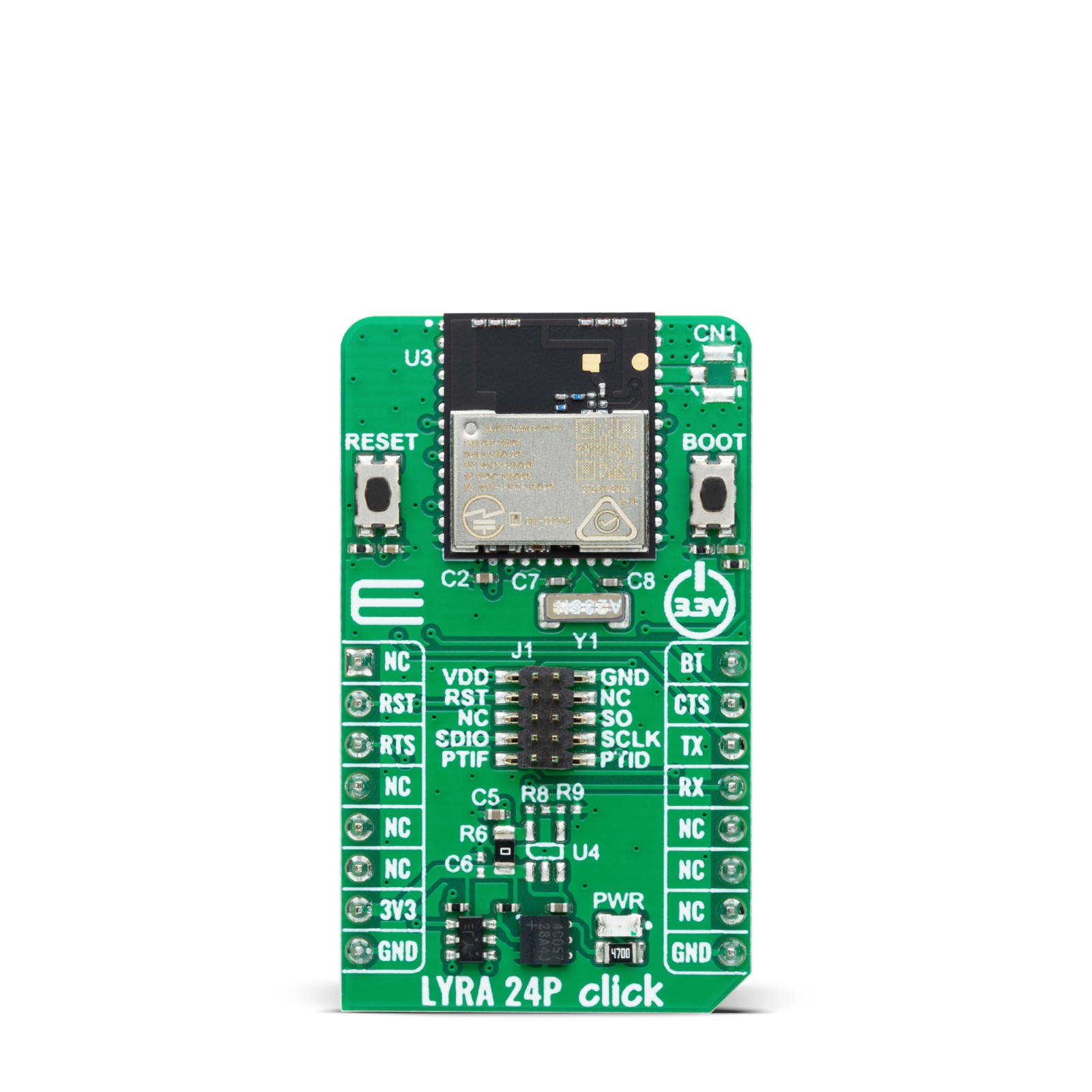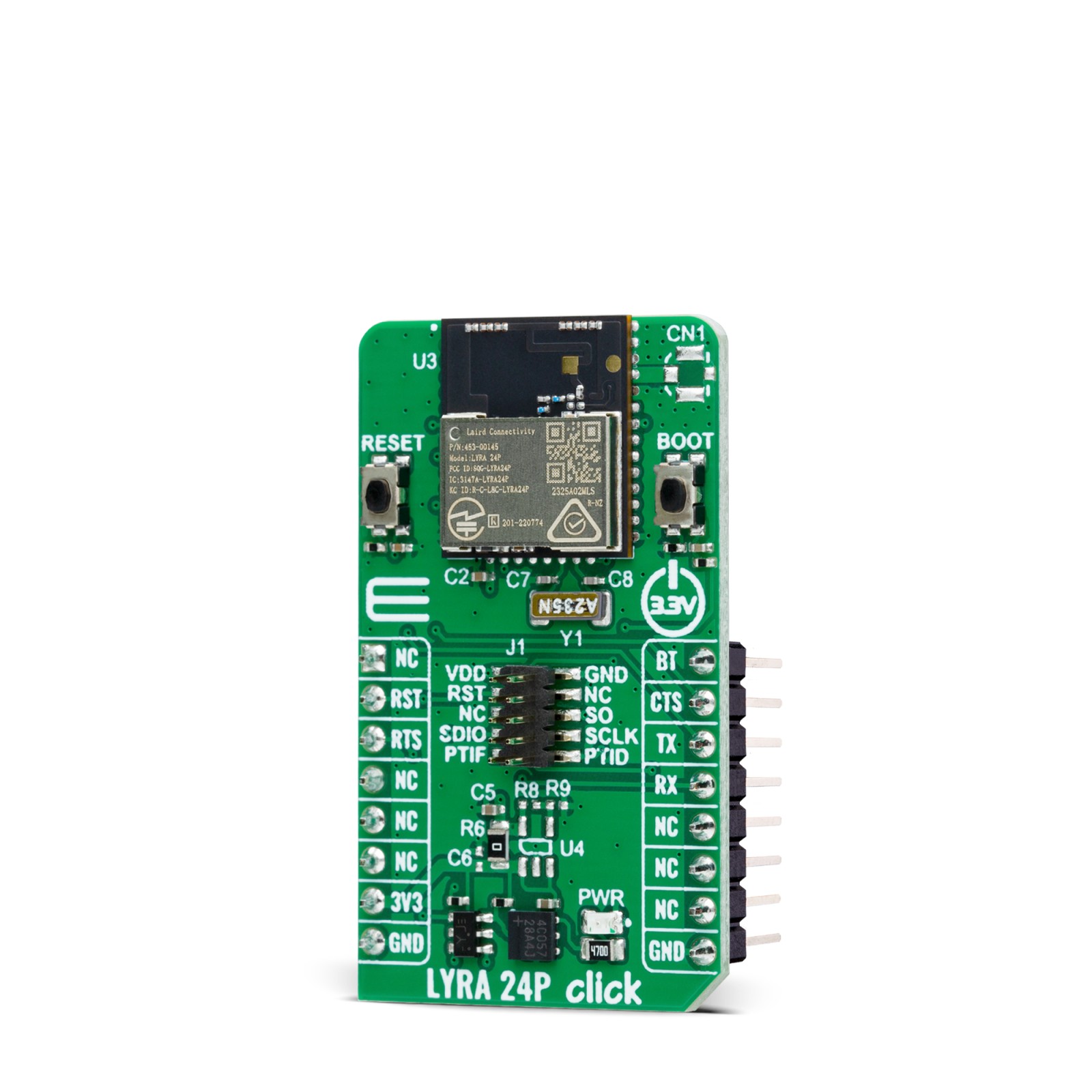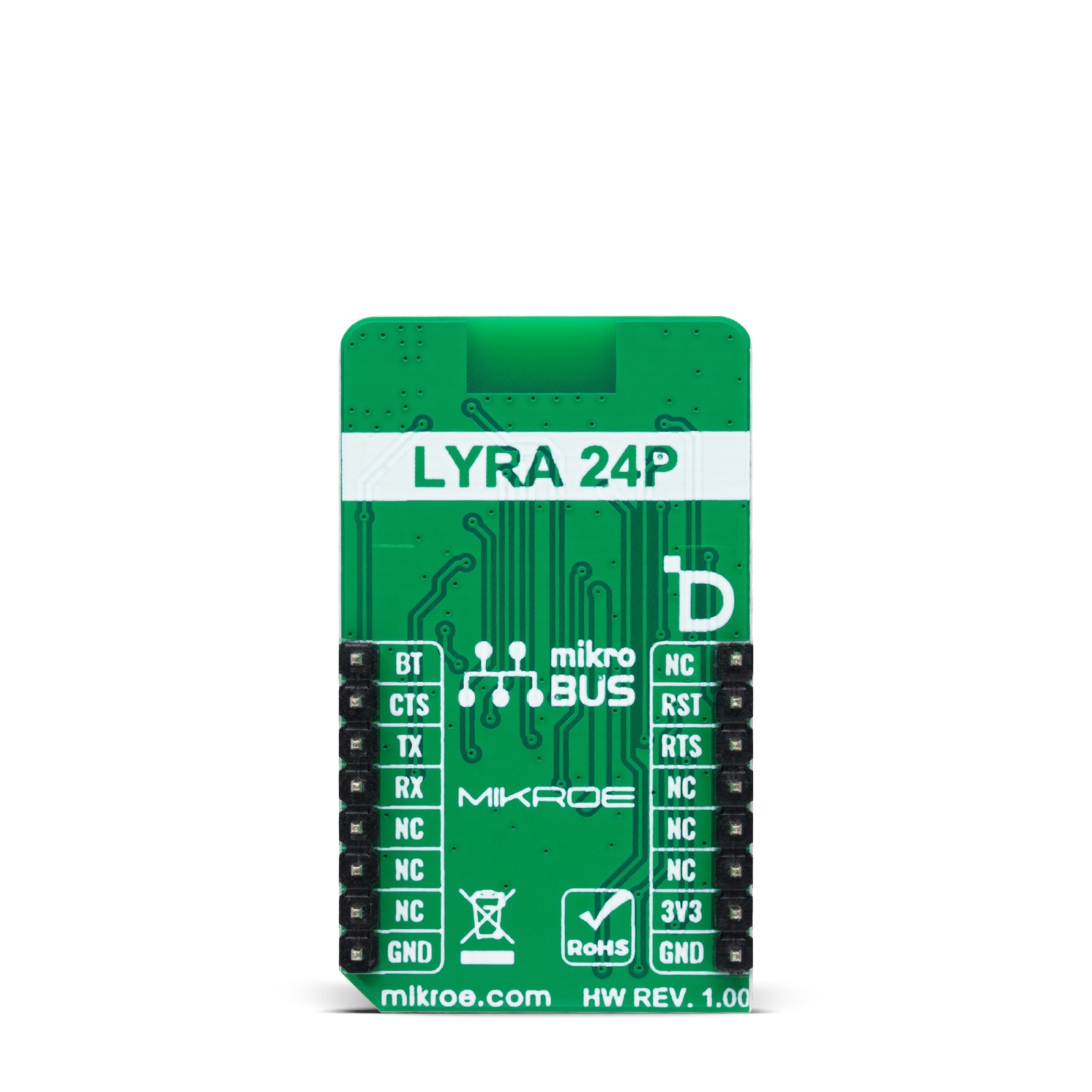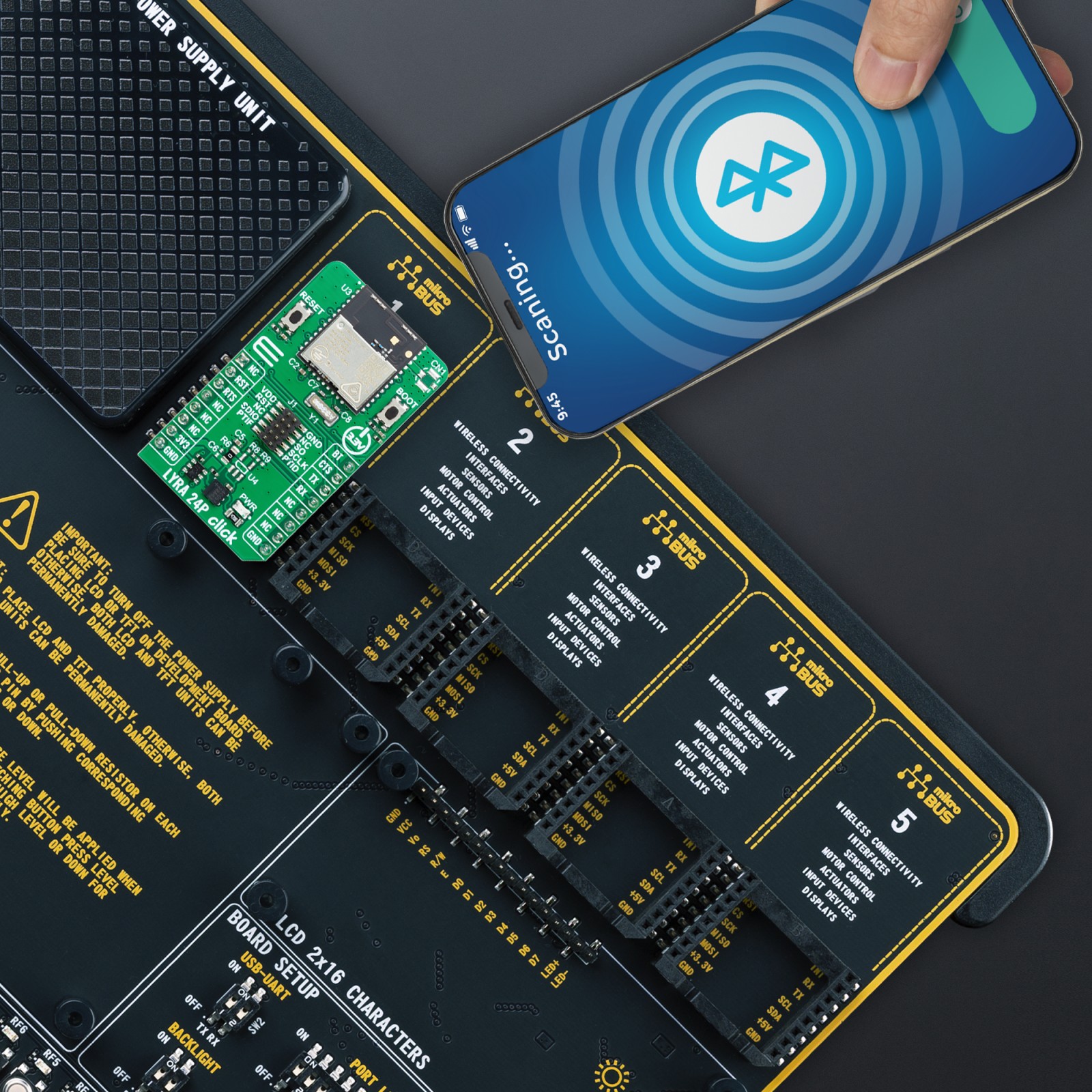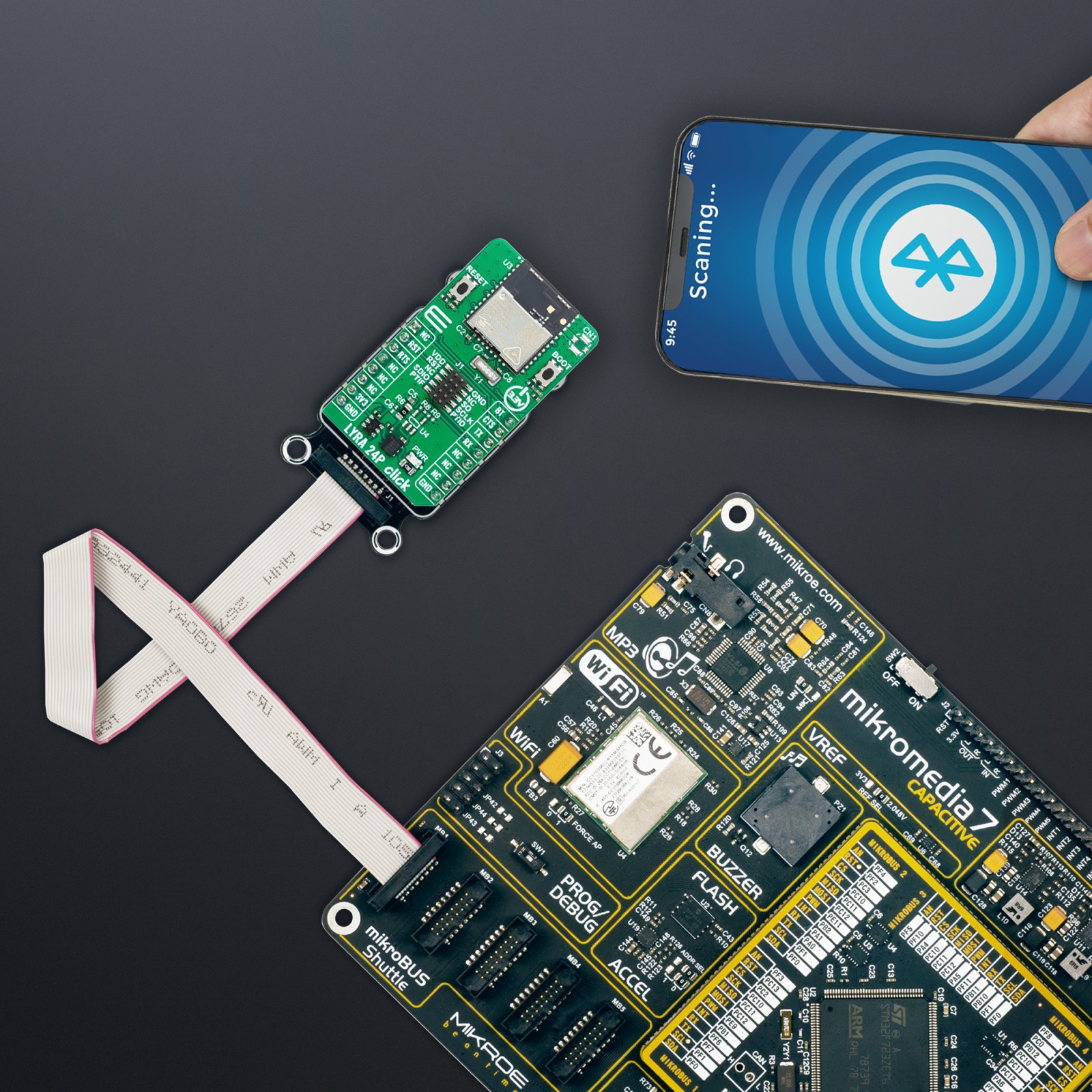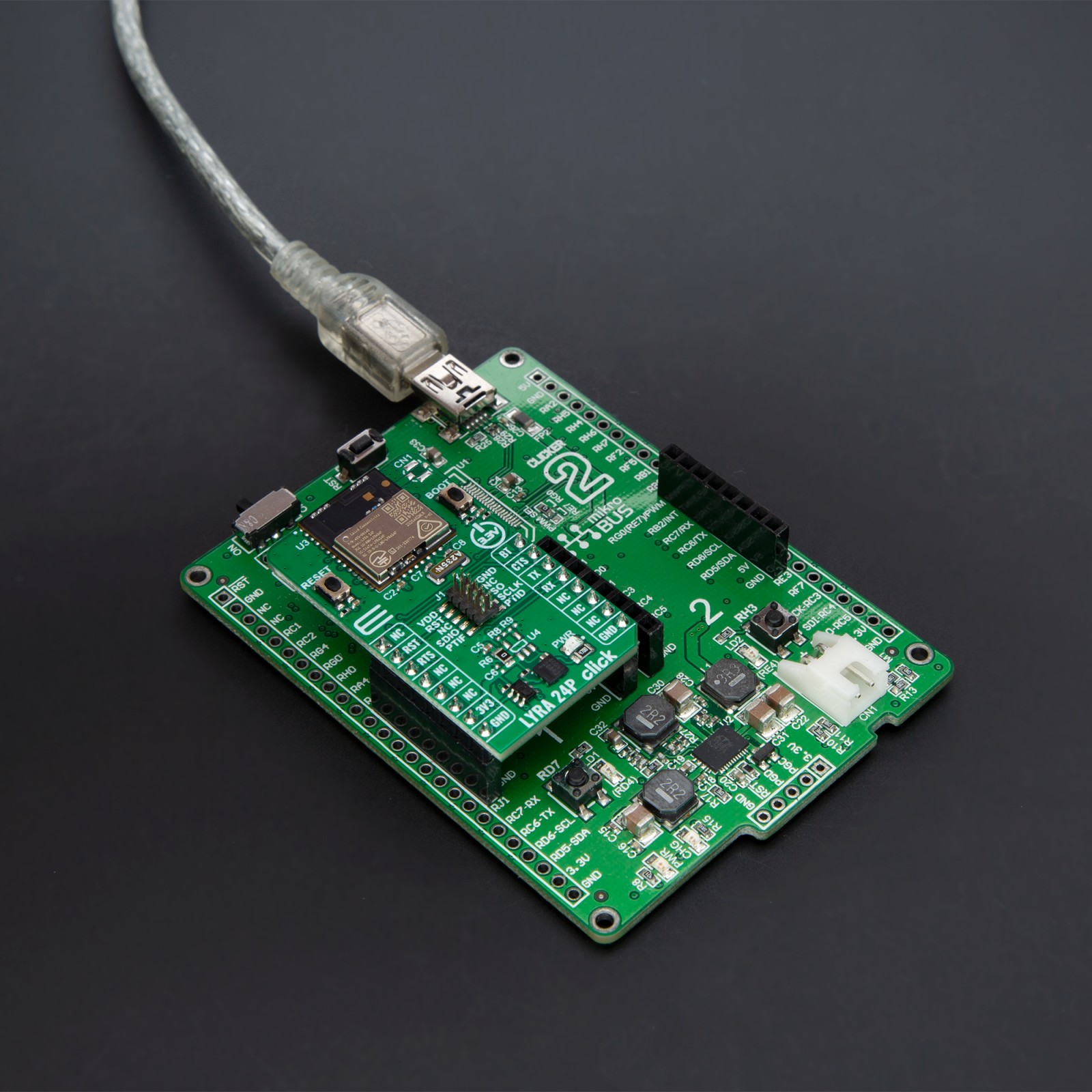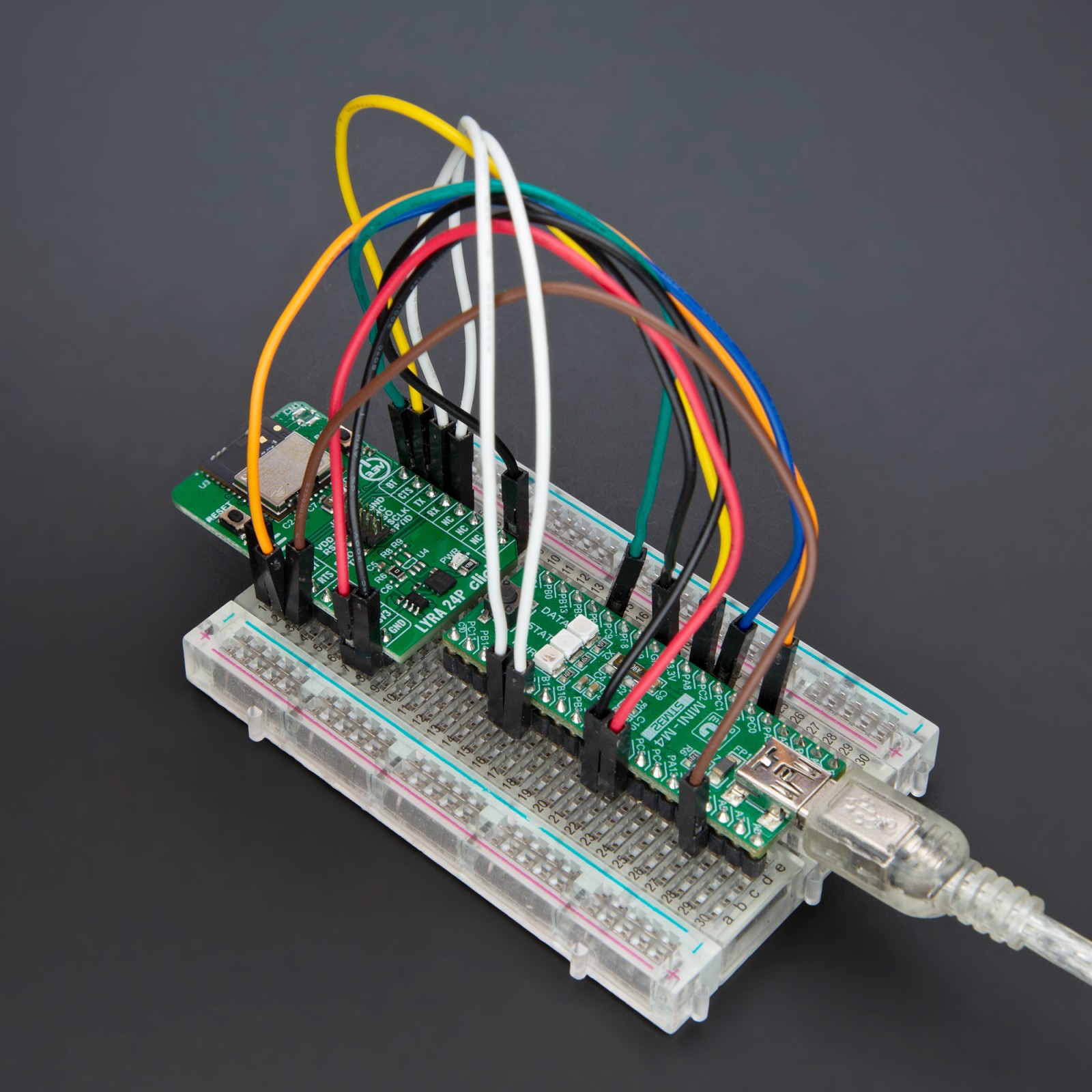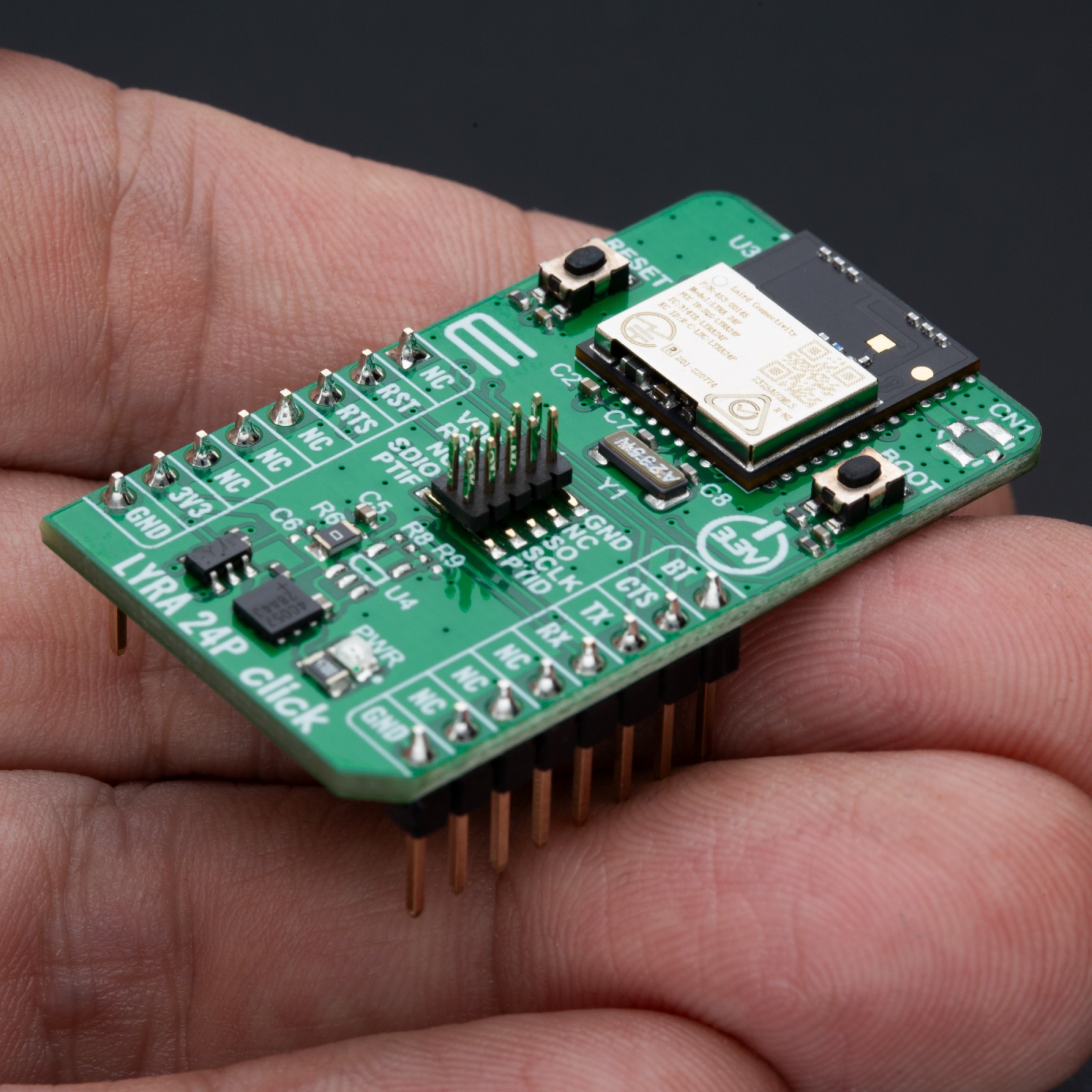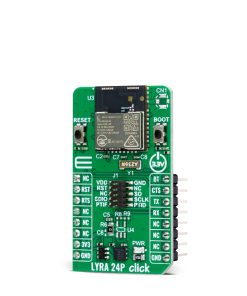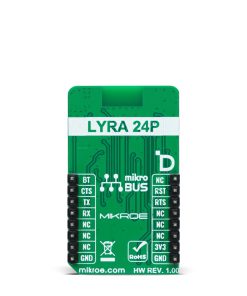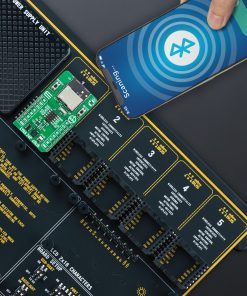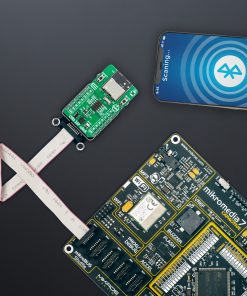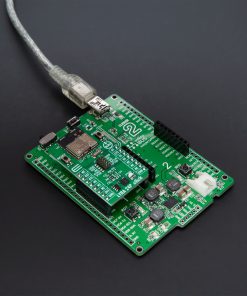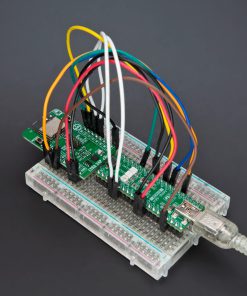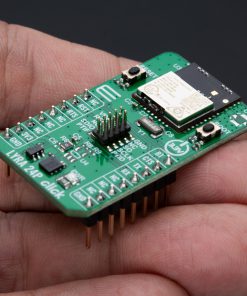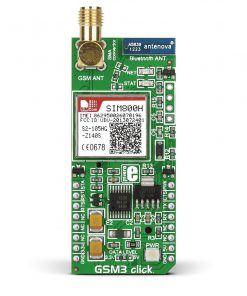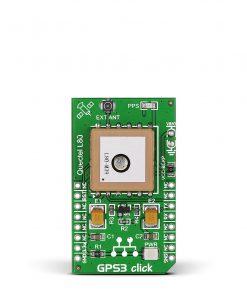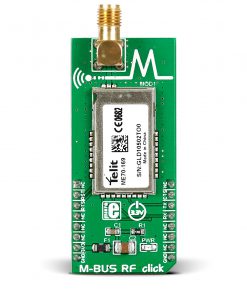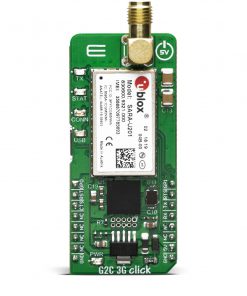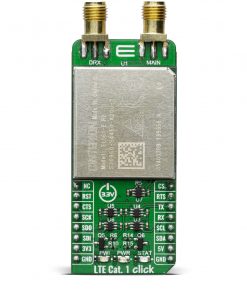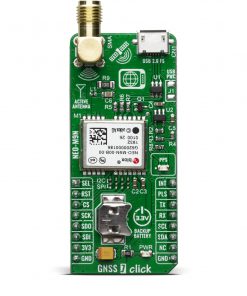Subtotal: R2,100.00
Lyra 24P Click
R650.00 ex. VAT
LYRA 24P Click is a compact add-on board for high-performance wireless connectivity in IoT devices running on Bluetooth. This board features the LYRA 24P (453-00145R), a secure high-performance wireless module from Ezurio. It features a 32-bit ARM® Cortex®-M33 core at 39MHz, Bluetooth® Low Energy (BLE) 5.3 connectivity, and industry-leading Secure Vault® technology for enhanced security and future-proofing. The module supports 2.4GHz wireless connectivity with a built-in antenna and offers global regulatory certifications. This Click board™ is ideal for applications such as smart home devices, lighting, building automation and security, gateways, digital assistants, and Bluetooth mesh low-power nodes.
LYRA 24P Click is fully compatible with the mikroBUS™ socket and can be used on any host system supporting the mikroBUS™ standard. It comes with the mikroSDK open-source libraries, offering unparalleled flexibility for evaluation and customization. What sets this Click board™ apart is the groundbreaking ClickID feature, enabling your host system to seamlessly and automatically detect and identify this add-on board.
Stock: Lead-time applicable.
| 5+ | R617.50 |
| 10+ | R585.00 |
| 15+ | R552.50 |
| 20+ | R531.70 |

 3D Motion Click
3D Motion Click  tRF Click
tRF Click 